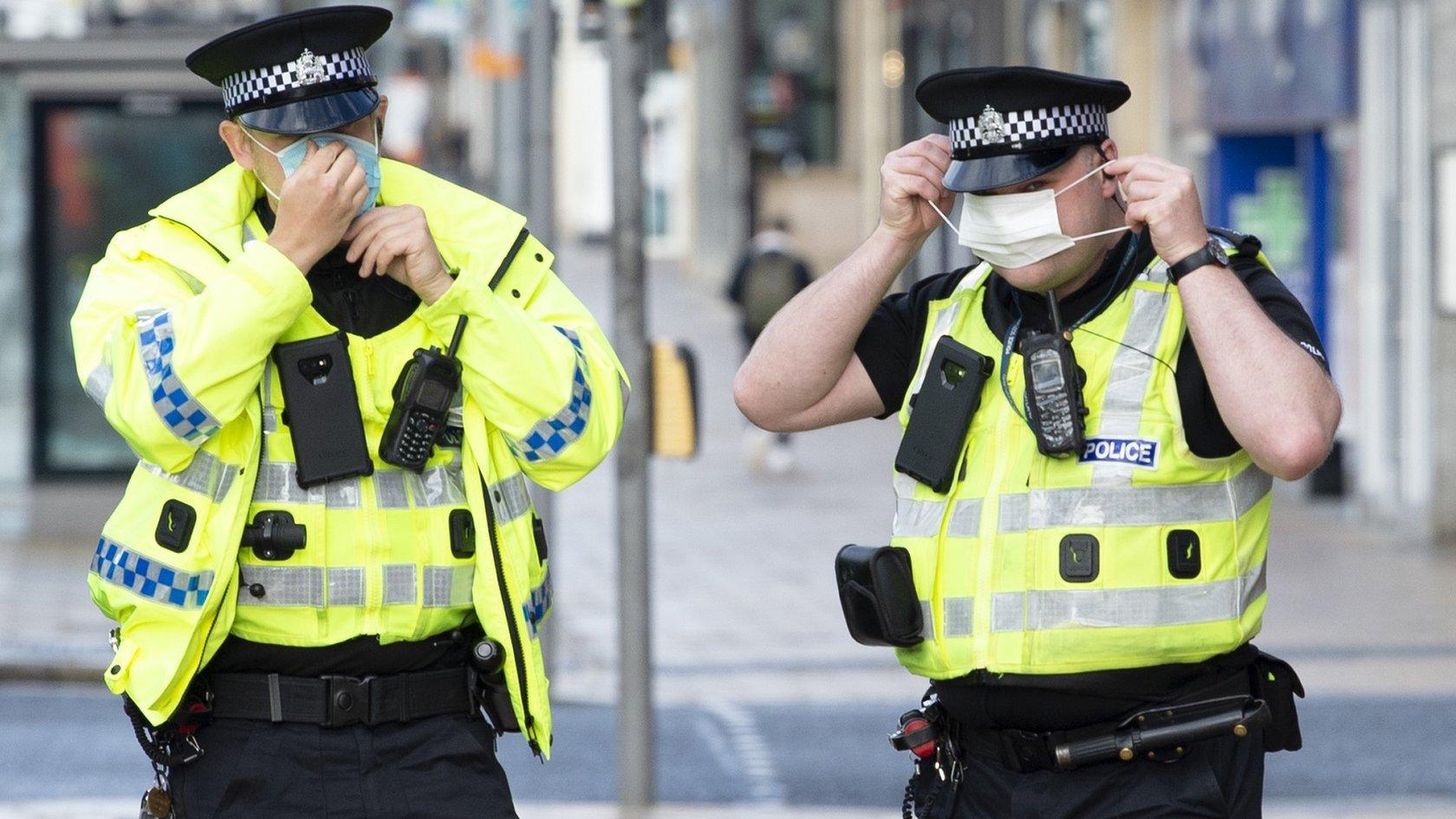Covid in Scotland: Ten ways crime changed during the pandemic
- Published
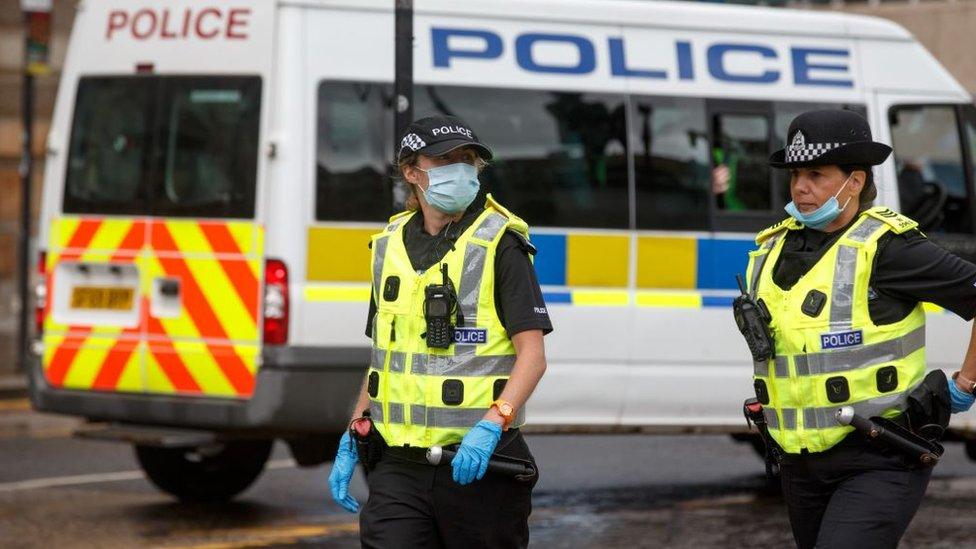
It has been a "unique" year for policing, according to Police Scotland's latest performance report, external, which covers the "exceptional period" from just a few days after the country first entered lockdown until 1 April 2021.
Here are 10 ways that policing and crime levels have been changed by Covid:
1. Assaults on police officers went up
The report says a large increase in common assaults on police officers can be partly attributed to Covid-19.
It says there were more than 1,000 attacks on police which related to a Covid situation, which was about one-sixth of all attacks on officers last year.
Attacks were highest during the first lockdown from the end of March last year and declined steadily.
2. More people were a nuisance
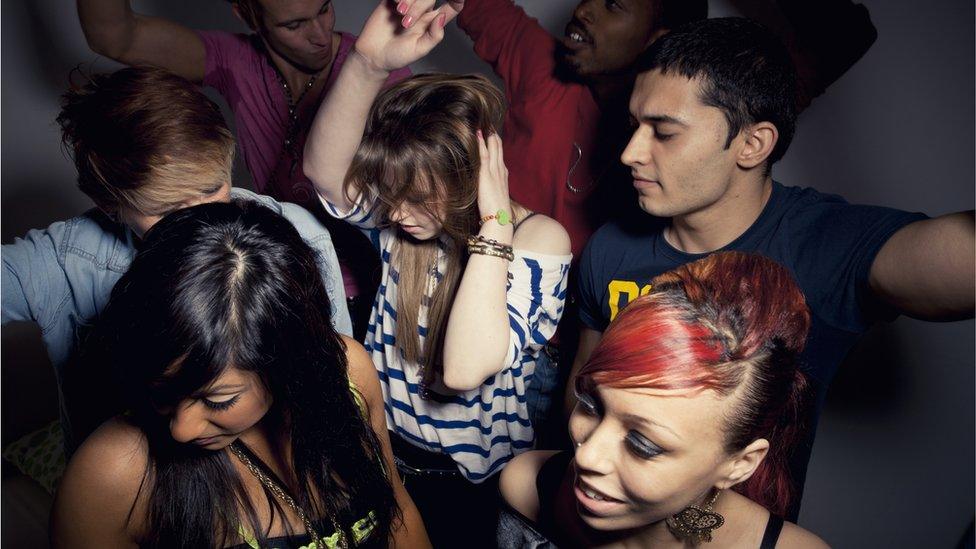
Overall incidents reported to Police Scotland fell during the year, but the unique circumstances created by the pandemic led to large rises in demand for officers to tackle breaches of Covid restrictions such as public nuisance (up 129%), neighbour disputes (up 41%) and noise complaints (up 15%).
The report said these trends were particularly prominent during the initial lockdown restrictions in spring 2020.
These rose again with the reintroduction of restrictions over the winter but never reached the peak of April 2020.
3. Shoplifting down by a third
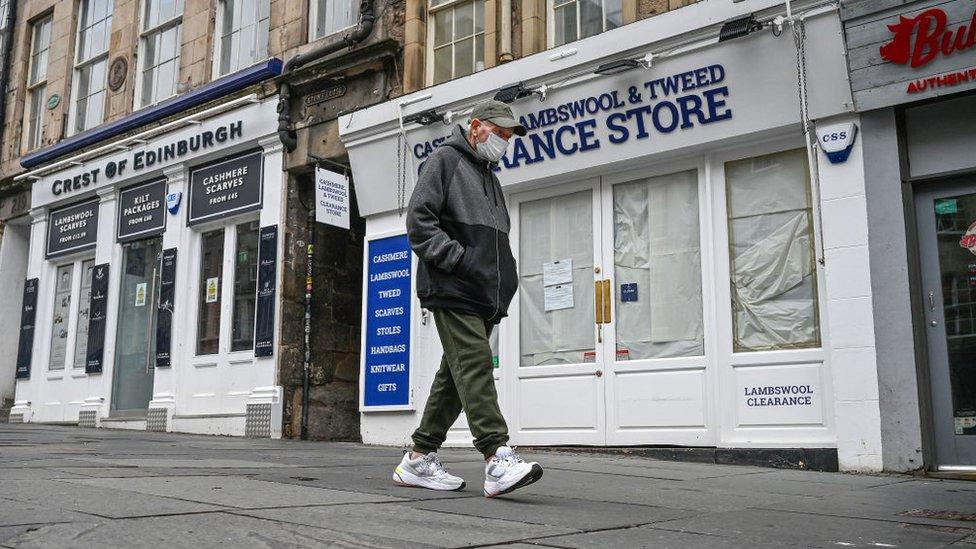
Many shops were closed for long periods due to Covid lockdown restrictions. So it is perhaps not surprising that incidents of shoplifting were down 32.7%. That is 10,000 fewer crimes.
Housebreaking was also down by a quarter, which could be because more people were spending time at home, giving thieves less opportunity.
4. Bike theft increased
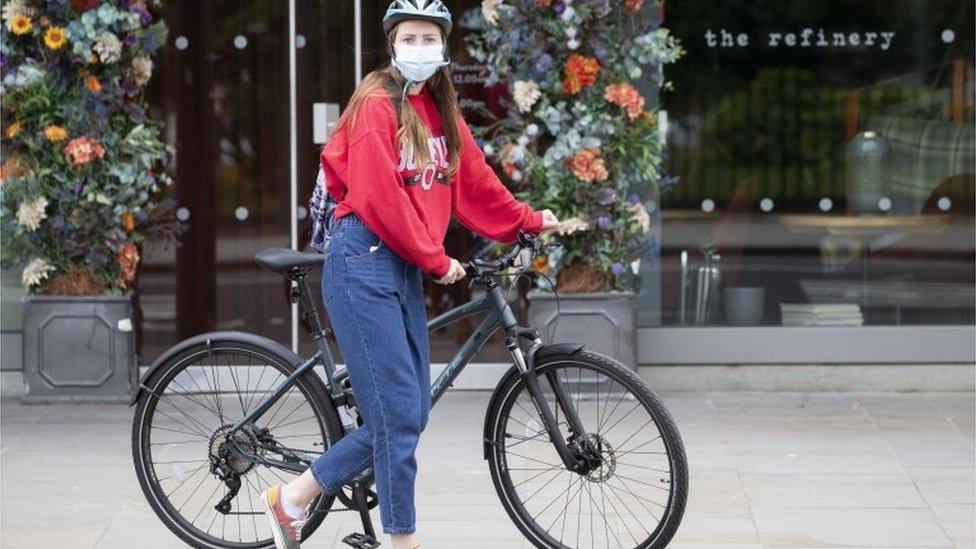
Despite acquisitive crime dropping by almost a fifth compared to the year before, bike theft went up by 19%.
Almost 900 more cycles were stolen than the previous year.
Police said it was a crime that was often motivated by opportunity, with those responsible taking advantage of poor security measures or bikes left unattended.
5. Domestic abuse was highest in first lockdown
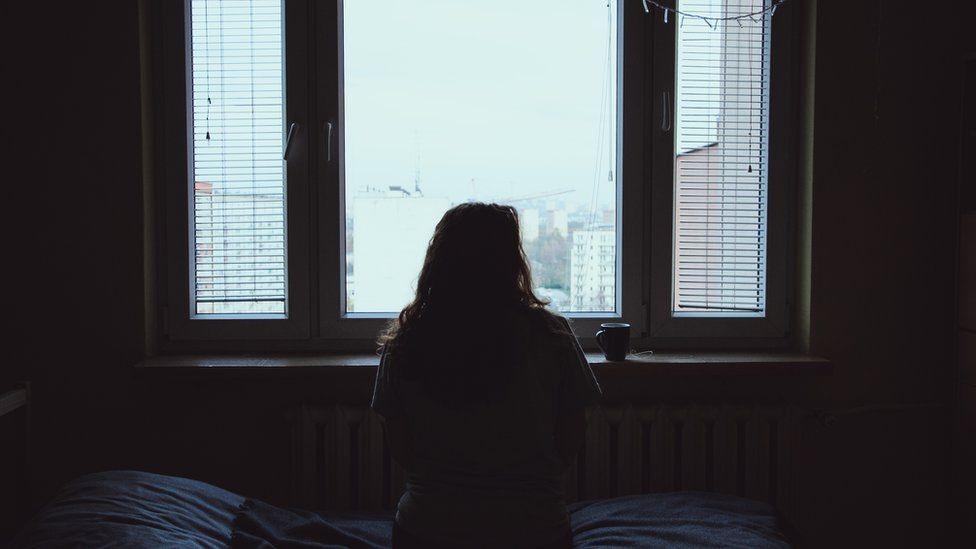
The police report says domestic abuse crimes were up over the year, by 3.3% on the previous 12 months.
Analysing the data, it found that the first lockdown which started at the end of March 2020 had the highest figures and there was a steady decline throughout the year.
It says the peak in assaults in the first wave of Covid was not repeated during the second wave earlier this year.
6. Road deaths down by a third
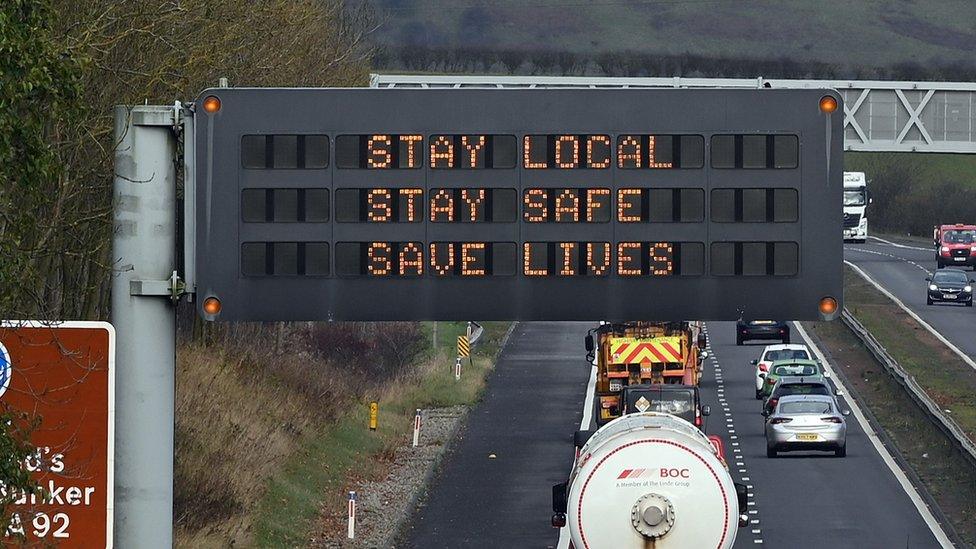
The Covid restrictions brought a reduction in traffic that saw 50 fewer people killed in road accidents than the average year.
The number of people killed on the roads - 110 - was down a third when compared with the previous year and the five-year average of 168.
The number of people seriously injured on the roads was also down a third.
The report said that following easing of the first lockdown, fatalities began to rise in line with increased traffic levels.
They fell again following the imposition of the second lockdown on 5 January.
7. Violent crime levels fell
Overall violent crime reduced by about 10% year-on-year. The number of homicides, serious assaults, robberies and common assaults were all down.
However, attempted murder and common assaults of emergency workers increased.
The only months where violent crime was higher than the same month in the previous year were July and August, when Covid restrictions had been eased after the first lockdown.
8. Fewer people went missing
Covid lockdown restrictions and the closure of schools appear to have significantly reduced the number of missing persons over the past year, down 12.5%.
But there were still more than 14,000 missing persons inquiries, with the vast majority located quickly.
The performance report said the number of missing person reports fell by as much as 40% during the first lockdown.
Following the easing of restrictions over the summer, numbers returned to previous levels.
The second lockdown saw numbers fall again, but not by as much as the first.
Police said that more of the reports than usual were deemed high risk and involved an element of mental health.
9. Wildlife crime reports increased as people went outdoors
A 50% increase in reports of wildlife crime could be related to more people visiting the countryside due to Covid restrictions.
The police report said the initial lockdown caused a vast percentage of the population to be off work and they attended local beauty spots and country walks "in their droves".
The obvious result was people observing and reporting more offences such as trapping and snaring, the report said.
Police believe this trend will continue as people stay in the UK for holidays this year.
10. Online crime continues to increase
The rise in reports of fraud and online child sexual abuse has continued and accelerated over the year.
There were a total of 1,966 child sexual abuse crimes recorded, an increase of 5.9% compared with the year before.
Fraud was up 38.2% on the previous year.
The performance report says that continued reliance on the internet during Covid restrictions has played a significant role in the increased number of fraud crimes.
The report noted a rise in ransomware fraud and "romance frauds" during lockdown, which victims were reluctant to report.
Romance fraud is where the victims believe that they are in genuine relationships with someone online and, after a short period, they are coerced into transferring money to their perceived "partner".
Police said these types of frauds had been increasing during the lockdown periods and encouraged victims to report them.


Related topics
- Published13 November 2020
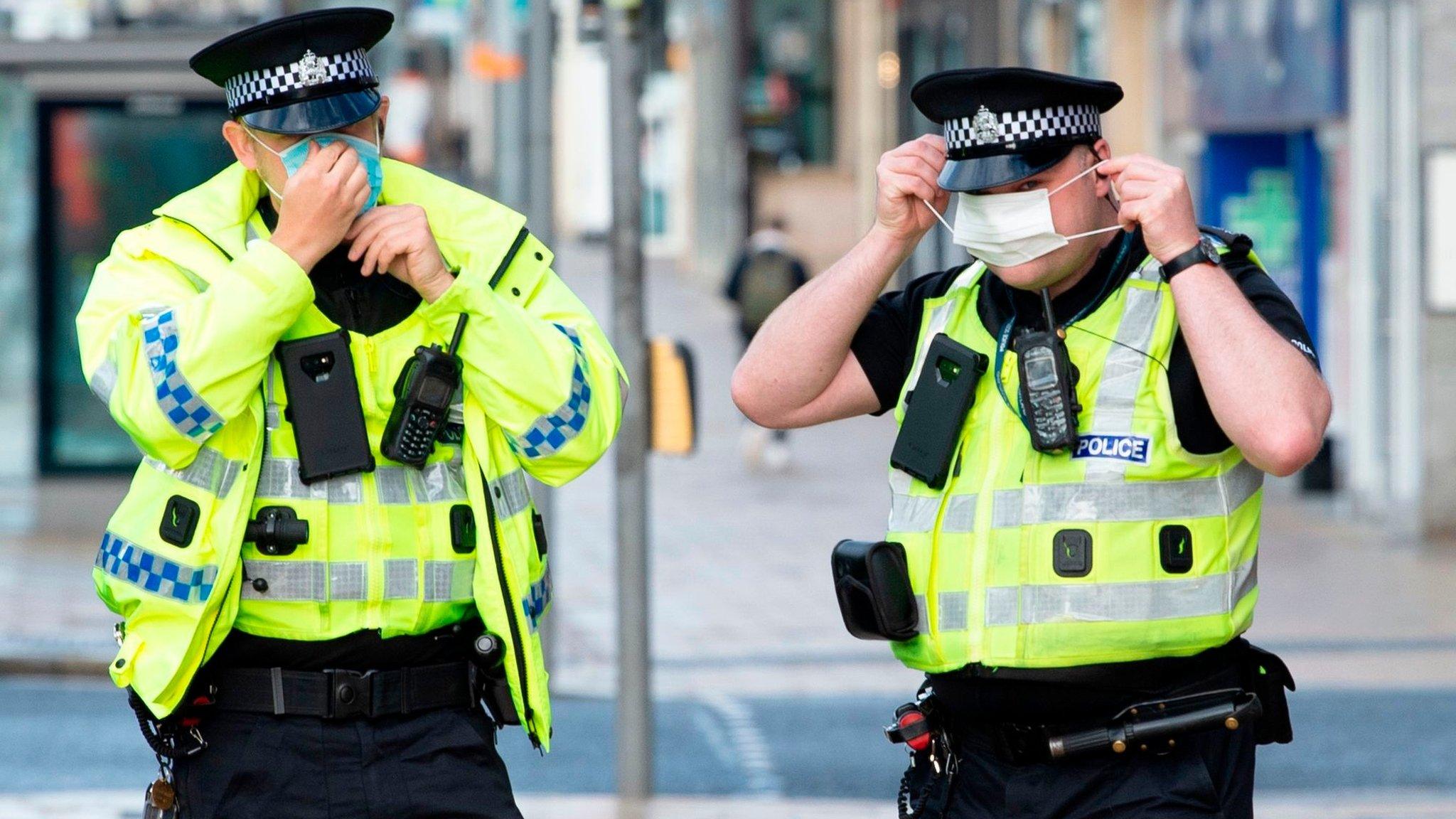
- Published28 October 2020

- Published17 December 2020
